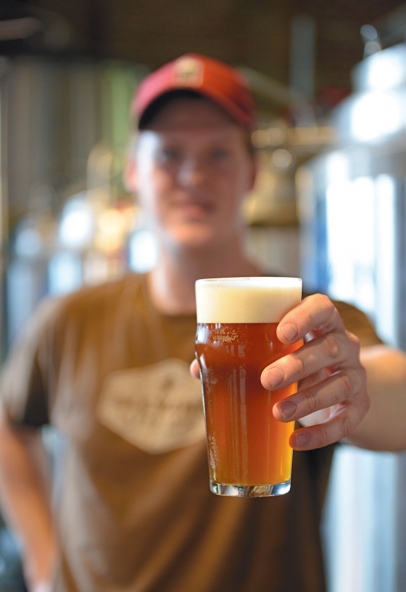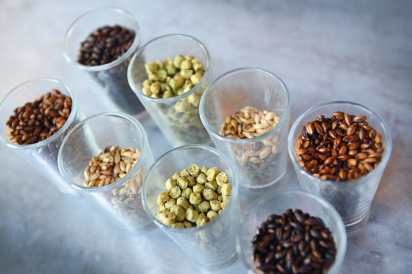CH Evans Brewing Co
C.H. Evans Brewing Co. is the grand-poohbah of brew-houses in the region, and it bears this distinction with pride. The original brewery was built in Hudson in 1786, and the Evans family kept the hops and barley flowing until Prohibition, exporting their ales as far as England and France. The Albany Pump Station, built in 1874, was used to pump municipal water from the Hudson River until 1937. In 1999, Neil Evans decided to revive his family’s historic brewery, bought the building and re-created a family legacy.
Evans’ beers, like their forebears, are world renowned, winning the World Beer Cup twice for their Munich Dunkel and Kick-Ass Brown Ale.
Like the folks at Brown’s, Demler bemoans the brewery’s inability to source all local ingredients, all the time.
“We would love to support our local farmers all the time,” he explains. “We actually created the first documented beer with all Albany County-grown ingredients since Prohibition. We called it the Indian Ladder Farms IPA and we used malt and barley they grew especially for us. We sold out very quickly.”
Despite the Hollywood ending, the process of actually sourcing the grains and creating a delicious beer with the ingredients at their disposal was less than picture-perfect.
“We developed a recipe expecting a certain type of barley,” Mr. Demler says. “But everyone out here is so new to growing barley, and there are so many different types of brewing barley, what we ended up with was very different than what we were planning on.”
There are thousands of varieties of barley; the barley used for cereal is totally different than the barley used for beer. Out west, farmers have been growing barley for beer for 200 years. During Prohibition, eastern farmers turned to other crops and the longest-tenured beer barley farmer in the Capital District has only been around for about five years. So growing pains are to be expected as farmers work with Cornell and the Cary Institute of Ecosystems Studies in Millbrook, New York, to find the best strains of barley, malt and hops that will thrive in our challenging clime.
Despite adjusted expectations, Demler says that the barley he usually works with is uniformly cereal-like. The Indian Ladder Barley was “super aromatic and perfumey,” he recalls. “Typically, when we cook a barley mash as a base for the beer, it smells like oatmeal or sweet, bready cookies. But this one smelled flowery, completely different. In the end, we tossed out our original recipe and developed one that allowed the unusual, complex notes to really sing.”
At one time, Evans has about 11 beers on tap with four or five standards and everything else in rotation, eventually cycling through up to 60 seasonal and style experiments per year.
As with Brown’s, with the exception of hyper-local brews like the Indian Ladder IPA, the beers that bear the stamp of Capital District terroir are often seasonal, and the stamp is most frequently seen in top-notes and prominent, though peripheral ingredients.
“We use local honey, cherries, apples and hops,” Demler says. “The local beer scene itself is amazing. Now there’s Brown’s, us, plus thanks to the governor’s legislation, Rare Form, Wolf Hollow and Green Wolf, to name just a few amazing local breweries, among the dozens that have gotten licensed in the past four years. To really bring local beer to where all of the brewers want it to be, though, further legislation needs to be enacted that will provide funds to farmers who want to plant barley and malt, but can’t tolerate the financial risk.”
Albany Pump Station, 19 Quackenbush Sq., Albany





